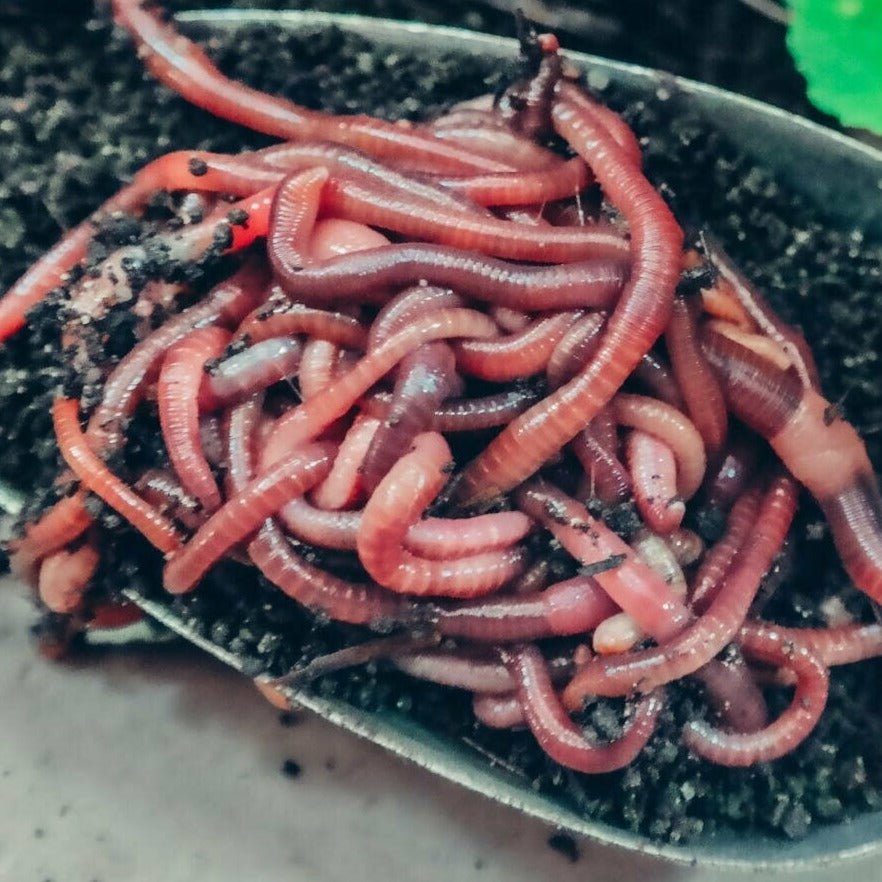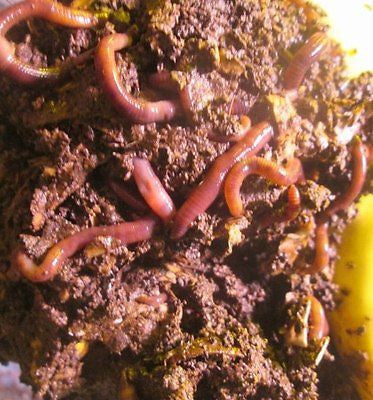Every Little Thing You Required to Know Regarding Red Wigglers for Composting
Red wigglers, or Eisenia fetida, play a crucial role in the world of composting, changing organic waste right into beneficial soil modifications. The procedure of establishing up a worm container and maintaining it can present challenges.
What Are Red Wigglers?

(Lake James Bait)
Belonging To The United States and copyright, red wigglers are surface-dwelling microorganisms that choose wet, warm environments abundant in disintegrating organic issue. Their diet is composed mainly of decaying plant material, food scraps, and various other natural debris, which they take in and damage down effectively. As they digest this product, they generate nutrient-rich spreadings that improve dirt fertility.
Red wigglers are hermaphroditic, having both male and female reproductive organs, and can duplicate quickly under optimal conditions. On the whole, red wigglers are important factors to the process of recycling natural waste right into important compost.
Benefits of Using Red Wigglers
Utilizing red wigglers in composting systems provides numerous advantages that boost both the efficiency of waste monitoring and the quality of the resulting garden compost. These worms, medically called Eisenia fetida, are especially reliable at breaking down natural issue, transforming cooking area scraps and lawn waste into nutrient-rich compost at a sped up price.
One of the primary advantages of utilizing red wigglers is their capacity to take in large quantities of organic material, typically refining their weight in food waste daily. This high usage rate results in faster decomposition and decreases the quantity of waste sent to garbage dumps. The spreadings produced by red wigglers are rich in vital nutrients, helpful microbes, and enzymes, making them an excellent plant food for yards and plants.
Furthermore, red wigglers flourish in a range of environments, making them versatile for both indoor and outdoor composting systems - red wigglers. Their presence in a garden compost bin assists to freshen the product, stopping smells and promoting a healthy composting procedure. Overall, employing red wigglers not only adds to reliable waste monitoring yet also supports sustainable horticulture practices with the production of high-quality garden compost
(red wigglers near me)
Setting Up Your Worm Container
To efficiently establish up a worm bin, it is vital to select a suitable container that meets the demands of red wigglers while supplying a conducive setting for composting. An appropriate container can be made from plastic, wood, or steel, with a capacity of a minimum of 1 square foot for every pound of worms.
Make sure the container has adequate drain holes to stop excess moisture, as red wigglers thrive in a moist, but not waterlogged, setting. red wigglers. The container needs to also be aerated to provide enough airflow, avoiding anaerobic problems that can damage the worms
A suitable location for the worm container is a cool, dark area, without straight sunlight and severe temperatures, as red wigglers favor a temperature series of 55 to 77 degrees Fahrenheit.
Before presenting the worms, prepare bed linen products such as shredded newspaper, cardboard, or coconut coir, which will certainly provide both habitat and food. Dampen the bed linens gently to produce an inviting environment for the worms. Consider positioning a lid on the container to maintain moisture and decrease insects, while ensuring it can be conveniently eliminated for maintenance.
Feeding and Care Guidelines
Feeding red wigglers is an essential facet of maintaining a healthy and balanced composting system. These worms prosper on a diverse diet regimen, largely made up of organic materials such as vegetables and fruit scraps, coffee premises, and smashed eggshells. It is vital to prevent feeding them meat, dairy products, and oily foods, as these can produce unpleasant smells and bring in bugs.
When presenting food to your worm container, cut or shred materials into smaller sized pieces to help with quicker decomposition. Start with little quantities to gauge the worms' usage price, gradually enhancing the quantity as they adapt. It is a good idea to alternate feeding locations within the container to encourage detailed blending and oygenation of the compost.

Troubleshooting Common Issues
Keeping a flourishing worm composting system can often offer difficulties that require attention and troubleshooting. Common problems consist of an undesirable smell, which typically suggests overfeeding or the visibility of anaerobic conditions. To remedy this, minimize the amount of food added and guarantee correct oygenation by mixing the bedding material.
One more regular problem is the getaway of worms from the bin. This can take place because of extreme wetness or unsuitable environmental conditions. On a regular basis examine the moisture degrees, going for a moist but not soaked consistency, and preserve optimum temperatures in between 60-80 ° F(15-27 ° C )to develop a comfy environment for your red wigglers.
Insects, such as fruit flies, can likewise attack worm containers. red wigglers. To combat this, cover food scraps with a layer of bedding or shredded paper to discourage flies from laying eggs. Furthermore, ensure that any kind of food included is fresh and devoid of mold, which can bring in undesirable parasites
Last but not least, if your worms seem non-active, inspect for tension elements such as temperature variations or poor dampness. Resolving these common concerns will certainly assist preserve a healthy and balanced and effective worm composting system.
Verdict
In summary, red wigglers, or Eisenia fetida, play a crucial function in sustainable waste management with vermicomposting. Their capacity to efficiently convert natural waste into nutrient-dense castings improves soil health and advertises plant growth. see this page Proper setup and upkeep of a worm bin, along with adherence to feeding guidelines, make certain a flourishing ecological community that reduces garbage dump payments. Addressing common concerns without delay further sustains the performance of this eco-friendly practice, contributing to environmental sustainability and farming productivity.